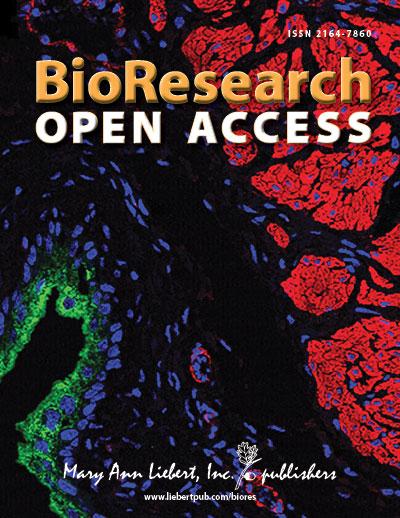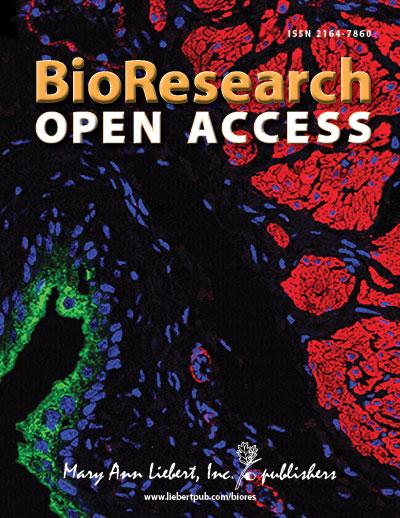
Credit: Mary Ann Liebert, Inc., publishers
New Rochelle, NY, Sept. 14, 2017 — Researchers from the Mayo Clinic have proposed that negative cellular responses to titanium-based nanoparticles released from metal implants interfere in bone formation and resorption at the site of repair, resulting in implant loosening and joint pain. Their review of recent scientific evidence and call for further research to characterize the biological, physical, and chemical interactions between titanium dioxide nanoparticles and bone-forming cells is published in BioResearch Open Access, a peer-reviewed open access journal from Mary Ann Liebert, Inc., publishers. The article is available free on theBioResearch Open Access website.
Jie Yao, Eric Lewallen, PhD, David Lewallen, MD, Andre van Wijnen, PhD, and colleagues from the Mayo Clinic, Rochester, MN and Second Affiliated Hospital of Soochow University, China, coauthored the article entitled "Local Cellular Responses to Titanium Dioxide from Orthopedic Implants The authors examined the results of recently published studies of titanium-based implants, focusing on the direct and indirect effects of titanium dioxide nanoparticles on the viability and behavior of multiple bone-related cell types. They discuss the impact of particle size, aggregation, structure, and the specific extracellular and intracellular (if taken up by the cells) effects of titanium particle exposure.
"The adverse effects of metallic orthopedic particles generated from implants are of significant clinical interest given the large number of procedures carried out each year. This article reviews our current understanding of the clinical issues and highlights areas for future research," says BioResearch Open Access Editor Jane Taylor, PhD, MRC Centre for Regenerative Medicine, University of Edinburgh, Scotland.
Research reported in this publication was supported by the National Institutes of Health under Award Numbers R01 AR049069 and F32 AR068154. The content is solely the responsibility of the authors and does not necessarily represent the official views of the National Institutes of Health.
###
About the Journal
BioResearch Open Access is a peer-reviewed open access journal led by Editor-in-Chief Robert Lanza, MD, Head of Astellas Global Regenerative Medicine and Chief Scientific Officer, Astellas Institute for Regenerative Medicine (Marlborough, MA), and Editor Jane Taylor, PhD, MRC Centre for Regenerative Medicine, University of Edinburgh. The Journal provides a new rapid-publication forum for a broad range of scientific topics including molecular and cellular biology, tissue engineering and biomaterials, bioengineering, regenerative medicine, stem cells, gene therapy, systems biology, genetics, biochemistry, virology, microbiology, and neuroscience. All articles are published within 4 weeks of acceptance and are fully open access and posted on PubMed Central. All journal content is available on the BioResearch Open Access website.
About the Publisher
Mary Ann Liebert, Inc., publishers is a privately held, fully integrated media company known for establishing authoritative peer-reviewed journals in many areas of science and biomedical research, including DNA and Cell Biology, Tissue Engineering, Stem Cells and Development, Human Gene Therapy, HGT Methods, and HGT Clinical Development, and AIDS Research and Human Retroviruses. Its biotechnology trade magazine, GEN (Genetic Engineering & Biotechnology News), was the first in its field and is today the industry's most widely read publication worldwide. A complete list of the firm's 80 journals, books, and newsmagazines is available on the Mary Ann Liebert, Inc., publishers website.
Media Contact
Kathryn Ryan
[email protected]
914-740-2250
@LiebertPub
http://www.liebertpub.com
Original Source
http://www.liebertpub.com/global/pressrelease/do-titanium-dioxide-particles-from-orthopedic-implants-disrupt-bone-repair/2249/ http://dx.doi.org/10.1089/biores.2017.0017





